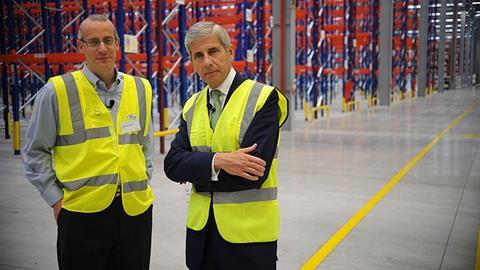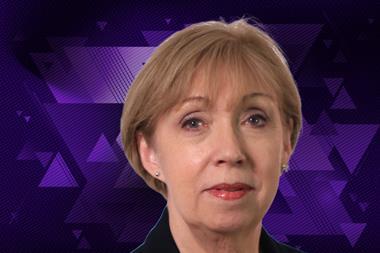The supply chain is crucial to Marks & Spencer’s 2020 business improvement. George MacDonald finds out how it is progressing

The advent of multichannel retail, the supply chain revolution of recent years and globalisation have transformed the stores sector and are among the factors behind Marks & Spencer’s 2020 business improvement project.
While the retailer had already begun overhauling systems that were decades old, M&S recognised the need to up the pace of change and last October unveiled the £1bn-capex 2020 programme. The intention is to reduce complexity, enhance efficiency, improve customer experience and save money - £175m a year by 2012/13 rising to £250m annually by 2015/16.
Key to the programme is the consolidation of warehouses and simplification of processes. M&S, which had 110 warehouses, will instead focus on a smaller number of “super warehouses”. So far, 21 small distribution centres have been shut and the first of the modern giant centres opened last month in Bradford, measuring 1.1 million sq ft and run by logistics firm Wincanton.
The change in strategy will enable a host of improvements, ranging from better distribution centre layout to reduce picking times through to cutting the number of occasions stock is handled from twice at present to once.
The Bradford centre, which supplies furniture and in-store equipment to all stores, and which from next year will also carry ambient food such as tinned goods, is already making a difference.
Lead times slashed
Lead times on furniture, other than made-to-order product, have already been slashed from 28 days to seven, logistics and IT director Darrell Stein told Retail Week when the centre was formally opened. He believes the time can be cut to as few as five or even three days. He said: “This will make a massive difference in furniture.”
And M&S chairman Sir Stuart Rose hailed the centre as “a hugely important symbol of what we’re trying to do”.
The second of M&S’s super-warehouses is a 900,000 sq ft centre scheduled to be operational in 2012, in Castle Donington, Derbyshire. It will hold general merchandise goods, including those for sale online.
The Castle Donington premises will be M&S’s first to incorporate a rail terminal, likely to help it deliver its Plan A environmental objective of being “the world’s most sustainable retailer” by 2015. The Bradford centre also incorporates a raft of eco-friendly measures.
M&S’s supply chain improvements go wider than its warehousing system and will bring a range of benefits to customers. In-store, a new point-of-sale system is being rolled out which, as well as being more cost-efficient, makes purchases and refunds easier - in the latter instance, the number of transactions necessary to process a refund has been cut.
Improved stock management
Similarly, stock management has improved as a result of the new software. The retailer said in its annual report: “The new centralised system provides real-time data from stores to a head office team, providing an accurate picture of stock levels at all times.”
At the retailer’s Paddington HQ, a host of old systems are being replaced with a standardised central system. That, says M&S, “will improve our visibility of sales, stock and margin data leading to better decision making and improvements in the way we manage our promotional spend”.
New ways of running operations will reap benefits as more product is delivered direct to overseas partners, rather than being shipped via the UK. Last year M&S delivered 9.8 million items direct to overseas shops and the target figure by 2013 is 30 million.
Singer Capital Markets analyst Matthew McEachran says that within M&S’s cost base, the savings being made may be relatively modest but welcomes M&S’s focus on the supply chain, which he said had fallen behind that of rivals.
He observes: “They put £1bn into store returns and the next phase is the vessels in the body. It should take stock out of the system and make stock flow more reliable, and that’s important for a business that had its hands tied behind its back in that respect.”
New M&S chief executive Marc Bolland is expected to unveil his strategic review of the retailer this autumn. Multichannel development and overseas expansion are understood to be high on his agenda - directors are being sought for each division - but it is likely that, whatever changes he may make, the drive to improve the supply chain and systems will remain at the heart of improvement plans.


























No comments yet